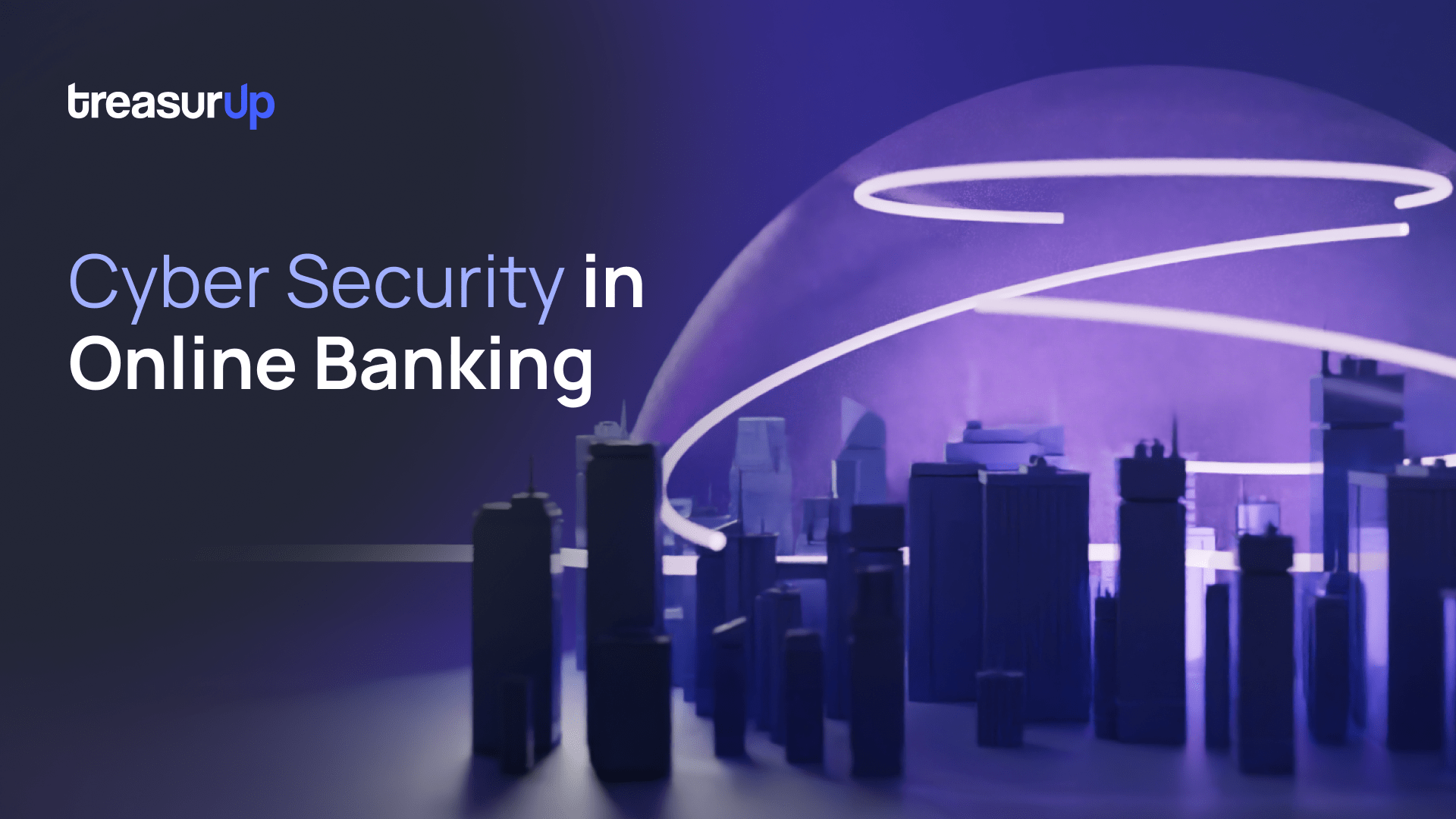

As we navigate this digital age, the convenience of online Commercial Banking has transformed the way businesses interact with their banks. But, with the rise of technology in banking, there has also been an increase in cyber threats. These threats cover everything from clever phishing scams to complicated ransomware attacks. They are not only a distraction, but they pose a real danger to the financial processes and health of a company and can seriously affect the trust and safety we expect from financial institutions.
In the next lines, we will give you an overview of the biggest cyber threats that the financial world is facing and how important it is for financial institutions to ‘up their cybersecurity game’ and keep improving their defenses.
It’s all about making sure banks are as secure as can be, protecting not just our cash, but also our business and personal data and the trust we place in them.

The digital innovation which came with unprecedented levels of convenience and efficiency brought also an escalation in the quantity and complexity of cyber threats. If the early attacks were primarily focused on immediate and straightforward financial theft via fraud and phishing schemes, modern cyber adversaries have evolved.
Currently, we are looking at sophisticated strategies including social engineering, ransomware, and attacks backed by nation-states which are focusing not only on direct financial gains but also on acquiring sensitive information and compromising essential infrastructure.
Phishing attacks are probably one of the oldest and, remain today, one of the most effective techniques used by cybercriminals to infiltrate companies. Crafting deceptive emails and messages that mimic legitimate internal or external communications remains the most cost-effective method for compromising a company. These attacks can result in unauthorized access to sensitive corporate data, financial information, and critical systems.
Ransomware attacks have seen a dramatic rise, targeting financial institutions with malicious software that encrypts data, rendering systems inoperative until a ransom is paid. These attacks not only demand financial payouts but also disrupt operations and erode customer confidence. In the last few years, a double extortion method has been used with cybercriminals holding data hostage and threatening to publicly release it.
At the end of 2023, the U.S. division of the world’s largest bank experienced a severe ransomware attack that considerably disrupted the U.S. Treasury market. While specifics of the attack and its consequences were not disclosed, it notably affected the confidence of business partners. Weeks after the incident, these partners remained hesitant to link their networks with the bank, citing ongoing security concerns.
Insider threats pose a significant risk to banking institutions. These threats originate from employees who, intentionally or accidentally, compromise security through the misuse of access privileges, disclosure of sensitive information, or unauthorized transfers of large sums of money. Recently, scammers utilized deepfake technology to defraud a Hong Kong-based financial institution of a staggering $25.6 million, sending shockwaves through the financial sector.
Addressing insider threats requires a multi-faceted approach, including:
Fourth-party risk represents a multifaceted and frequently neglected dimension of risk within an organization’s security framework. It arises from the indirect associations that a company forms through its direct third-party vendors, specifically extending to the subcontractors or suppliers those vendors utilize. A breach in even a single subcontractor’s systems can trigger a cascading effect, potentially compromising the entire network and affecting the primary company’s operations.
As cybercriminals deploy more sophisticated techniques, including social engineering, artificial intelligence, and ransomware, it is crucial for organizations to increase their defenses. This involves security awareness training, implementing stringent access controls, and adopting advanced cybersecurity technologies. The recognition and proactive management of “fourth-party” risks are essential to mitigate cascading vulnerabilities throughout the banking network. These measures are vital in protecting sensitive information and maintaining the integrity and trust of the financial system.
Adrian P. is an experienced Information Security Officer, boasting over 20 years of expertise in risk management and information security. Throughout his career, he has held multiple management positions within major financial and industrial corporations.
At TreasurUp, his primary responsibility is to ensure that all customer data is adequately protected and securely managed, adhering to the highest standards of data security.
We are a Dutch FinTech company that provides banks around the world with innovative online front-end solutions for their business clients.
These solutions are tailored to and designed for the bank, white-labeled and offered through Web, Mobile and APIs. We offer solutions for bank business clients in the areas of risk and liquidity management solutions. TreasurUp aims to boost a bank’s top line revenues and client satisfaction by reinventing online Commercial banking. How? By designing and developing modules from a treasurer’s point of view.
We believe in a bank & fintech partnership model and are proud to have clients like Nordea, Rabobank, KBC, OP bank, SEB, Handelsbanken, OLB, Sparkasse and LBBW. For more information about our tailored solutions for bank business clients please feel free to reach out: Request a Demo here.